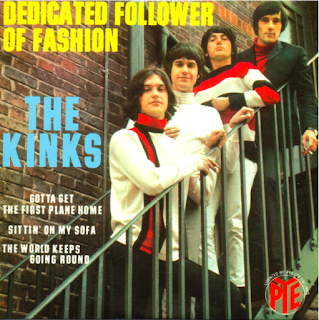Last week many colleagues will have participated in INSET and CPD where senior or not so senior leaders will have unwittingly promoted the latest teaching or management fad. Many of these fads will encourage teachers to believe that some quite simple changes in their practice will lead to immediate and quick results. Unfortunately, the vast majority of these claims are unsubstantiated by evidence and will result in hard-pressed teachers wasting their time. So to t help school leaders and teachers distinguish between ‘fads’ and ‘classics’ this post will; examine is meant by the term ‘fad’; second, what are the warning signs to look out for; third, what questions should you ask when deciding whether a new initiative is right for your school.
What are fads?
(Miller et al., 2004) …. define fads as ideas that
(1) become very popular quickly, (2) stay popular for only a few years, and (3)
experience a steep decline in interest and attention, leaving little trace. To
avoid ambiguity, we have first defined fads by their life-cycles, not any common
properties or outcomes they exhibit (p7).
Examples in education
Fortunately @TeacherToolkit has recently identified some of the most common teaching fads of the last twenty years http://www.teachertoolkit.me/2016/07/10/education-fads/ and which include:
- Lesson outcomes
- Assessing pupil progress
- Chinese teaching
- Textbooks
- Sitting in rows
- Group work
- Zero tolerance
- Verbal feedback stamps
- Triple-marking
- Starters, middle and plenaries
In addition, there is a long-list of management fads which we could include, such as:
- Management by objectives
- Total quality managements
- 360 degree feedback
- Business process engineering
- Emotional intelligence
- Management by walking around
- Authentic Leadership
What are the warning signs to look out for ?
(Miller et al., 2004) identify eight common characteristics which management fads seem to
have , and which if a number of are present should lead to school leaders being
sceptical of the claims made by the fads proponents. So what should school leaders look out for:
- Simple, straightforward. A fad’s ideas are easy to communicate, comprehend, and reduce to a small number of factors, dimensions, or characteristics. Clear-cut distinctions, perfect contrasts, and ideal types are proposed. Simple solutions are suggested.
- Promising results. Fad auteurs are confidently didactic. There is no false humility or hedging. Fads promise results such as greater control and efficiency, more motivated and productive workers, more satisfied customers, or some other valued result.
- Universal. Fads propose solutions for everyone. Imparted truths are said to apply to almost all organizations, functions, tasks, individuals, or cultures. Fads claim enormous generality and universal relevance.
- Step-down capability. Fads have the capacity to be implemented in ritualistic and superficial ways. Recommendations can be implemented quickly and easily, often without having much effect on organizational practices. Recommendations involving large expenditures of resources or substantial redistributions of power can be avoided.
- In tune with zeitgeist .Fads resonate with the major trends or business problems of the day. They respond to challenges that are broadly felt and openly discussed. These might result from deficiencies in current administrative practices, technology changes, or shifts in economic or social conditions. Solutions are in tune with prevailing values.
- Novel, not radical. Fads are novel, not radical. They question existing assumptions, criticize widespread practices, and point to fresh new ways of doing things. However, this novelty is not so much a new discovery as a rediscovery and repackaging of older ideas, values, and approaches.
- Legitimacy via gurus and star examples. Fads are supported by tales of excellent companies and the status and prestige of gurus, not by solid empirical evidence. Stories of corporate heroes and organizational successes provide role models and suggest star examples prestigious adherents, lending an aura of legitimacy to the ideas being espoused.
- Lively, entertaining Fads are almost always presented in a way that can be described as concrete, articulate, bold, memorable and up-beat. They are filled with labels and buzzwords, lists and acronyms. Interesting anecdotes and corporate war stories abound. Descriptions are vivid and extreme, making fads fun to read about and listen to.(Miller et al., 2004) p11.
(Miller et al., 2004) state when critically examining whether to implement a change,
managers, in this case school leaders, could usefully ask themselves the
following questions.
- What evidence is there that the new approach can provide productive results. Are arguments based on solid evidence from lots of companies (schools) followed over time?
- Has the approach worked in firms (schools) similar to our own that face similar challenges?
- Is the approach relevant to the priorities and strategies relevant to our company (school)?
- Is the advice specific enough to be implemented? Do we have enough information about implementation challenges and how to meet them?
- Is the advice practical for our company (school) given our capabilities and resources?
- Can we reasonably assess the costs and prospective rewards (Amended from (Miller et al., 2004) pp 14-15
If the answers to these questions suggest
positive outcomes, it may well be that school may have identified a change
which has ‘legs’. The key is not to
embrace or reject fads, but rather engage in a critical analysis of what is
right for the school, its pupils and staff.
Reference
MILLER, D., HARTWICK, J. & LE BRETON-MILLER, I.
2004. How to detect a management fad—and distinguish it from a classic. Business Horizons, 47, 7-16.

This comment has been removed by the author.
ReplyDeleteIf the answers to these questions suggest positive outcomes, it may well be that school may have identified a change which has ‘legs’. The key is not to embrace or reject fads, but rather engage in a critical analysis of what is right for the school, its pupils and staff.
ReplyDeletevelvet king comforter ,
cal king bed in a bag ,